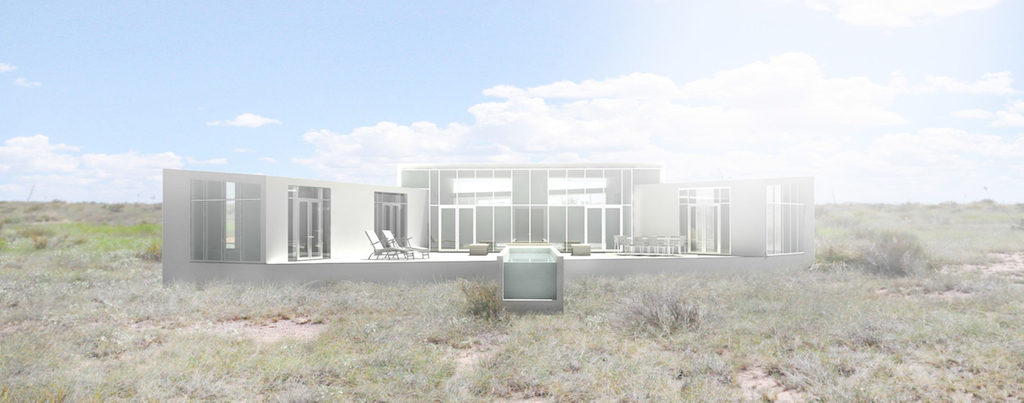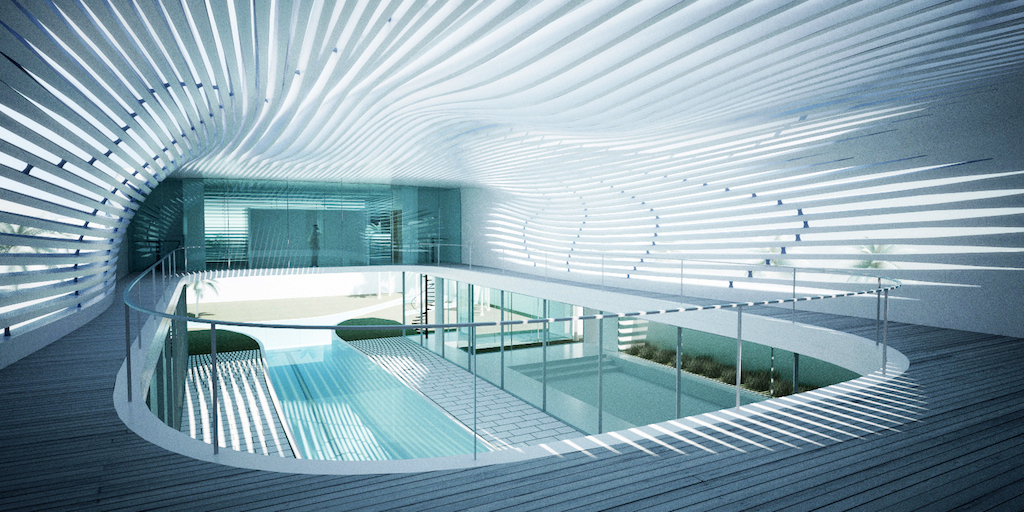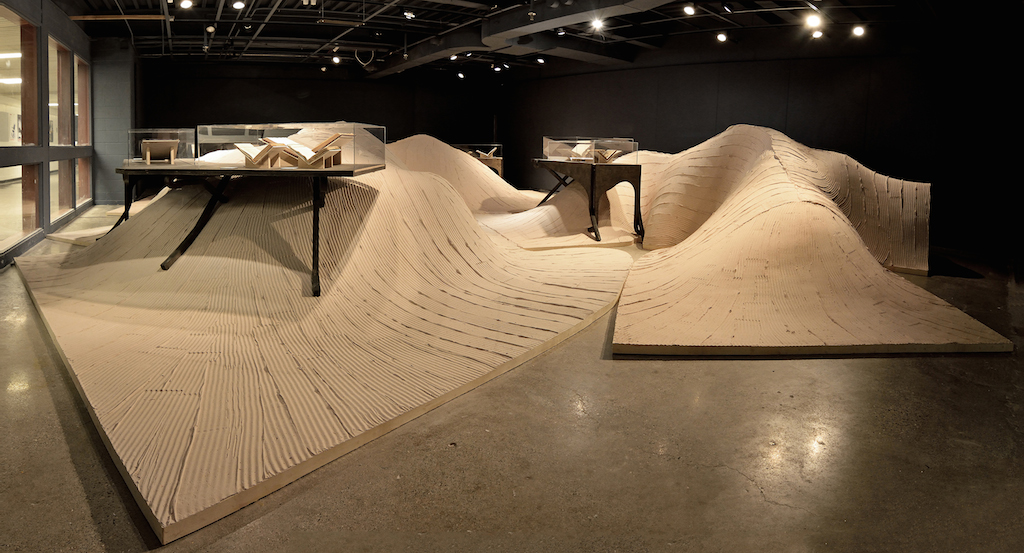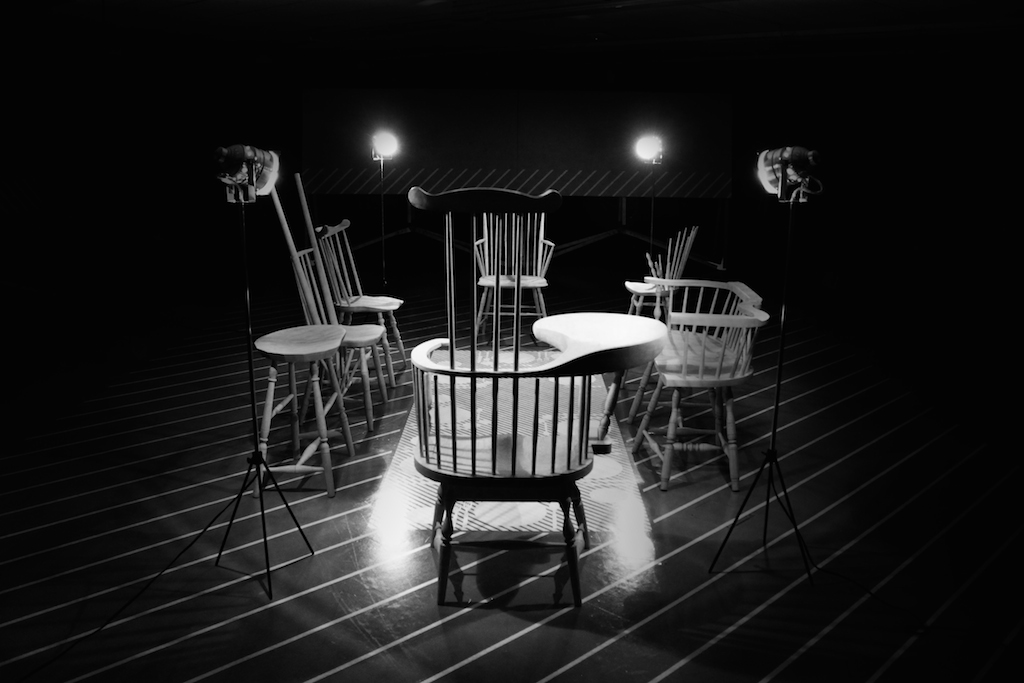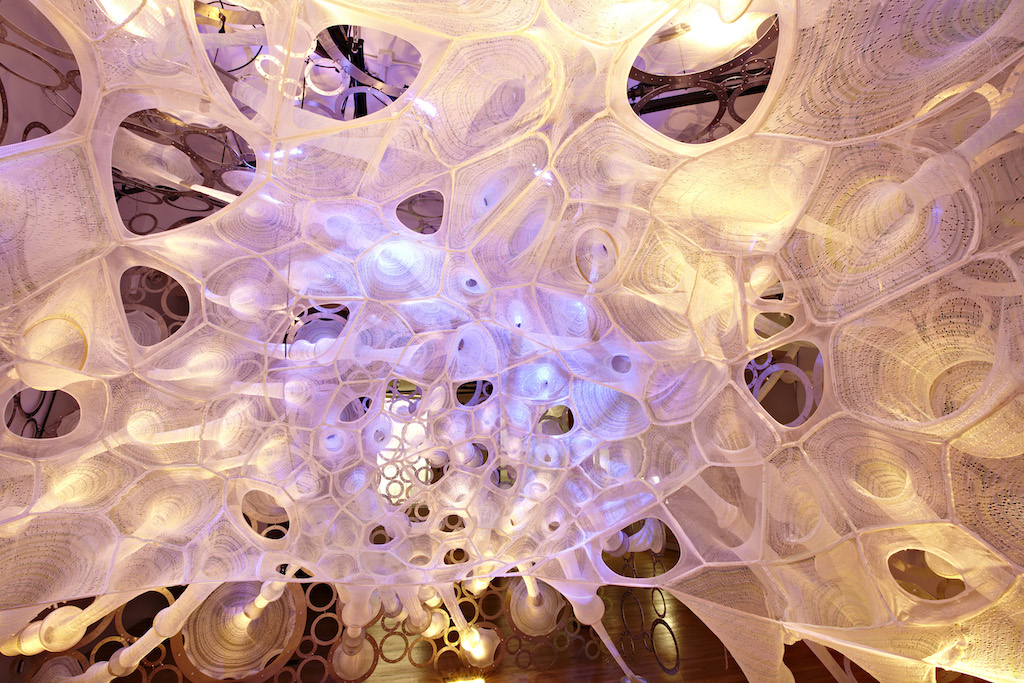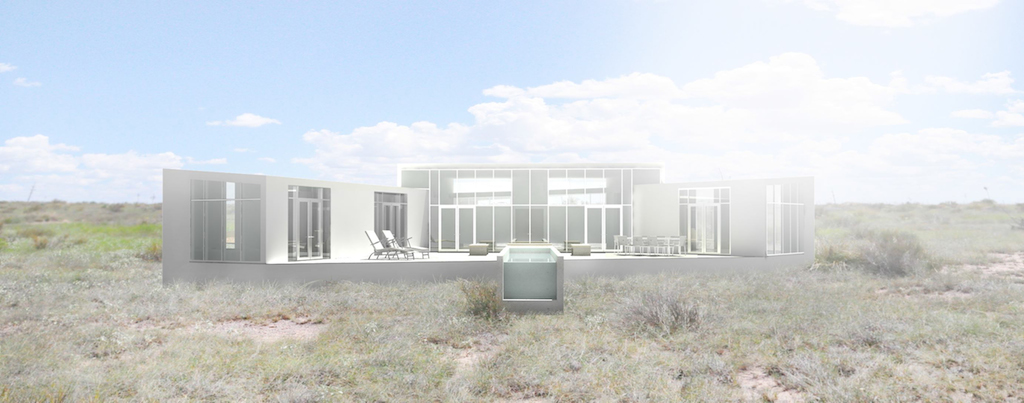The Architectural League Prize, created in 1981, "recognizes exemplary and provocative work by young practitioners and provides a public forum for the exchange of their ideas."
This year, six winners were selected, from firms East Coast to West. Each will present their work in lectures, at an exhibition, and in a catalogue published by Princeton Architectural Press.
Each year, the competition has a unique theme chosen by the League's Young Architects + Designers Committee. This year, the theme was "Overlay," defined as “directs—rather than merely reconstructs—process.”
As explained in the call for entries: “We are interested in how overlay (iterative, conceptual, and notational) drives discourse, tension between iterations, design solutions, and the parameters by which work is reviewed. Overlay is unique to the designer; the techniques developed are activated overtime with layered meanings to push architectural concepts. Thus submissions might include interpretations of overlay that vary from process to presentation to product to shape and establish your identity as a young practice.”
In addition to the committee members, the 2014 Architectural League Prize jury consisted of Preston Scott Cohen, Evan Douglis, Florian Idenburg, Jennifer Lee, Charles Renfro, and Annabelle Selldorf.
Check out the winners below, with firm descriptions from the Architectural League:
Young & Ayata
Kutan Ayata and Michael Young
Brooklyn, N.Y.
In 2008, Kutan Ayata and Michael Young co-founded Young & Ayata in order to “explore novel formal and organizational possibilities in architecture and urbanism.” The Brooklyn-based partnership is committed to experimentation, and views “the reality of contemporary building as a provocation to the progression of experiments in form, material, and technology.”
The firm’s work consists of both commissions and experimental research, as they seek to engage “with contemporary cultural issues that influence and are influenced by our environment.” Recent projects include the competition scheme of an opera house in Busan, South Korea, and a conceptual master plan for the Aalto University Campus Center in Helsinki, Finland.
Kutan Ayata received a Bachelor of Fine Arts in Architecture from the Massachusetts College of Art in Boston and a Masters in Architecture from Princeton University, where he was a recipient of the Suzanne Kolarik Underwood Thesis Prize. He is an Adjunct Assistant Professor at Pratt Institute’s GAUD and a Lecturer at University of Pennsylvania.
Michael Young received a Bachelor of Architecture from Cal Poly San Luis Obispo and a Masters of Architecture from Princeton University, where he was also the recipient of the Suzanne Kolarik Underwood Thesis Prize and the Howard Crosby Butler Traveling Fellowship in Architecture. He is an Assistant Professor at The Irwin S. Chanin School of Architecture at The Cooper Union and teaches in the core graduate design studio at the Yale University School of Architecture.
Kutan Ayata and Michael Young will discuss their work on June 26, 2014, in a public lecture.
The LADG
Claus Benjamin Freyinger and Andrew Holder
Los Angeles
Established in 2004, The Los Angeles Design Group (The LADG), is led by principals Claus Benjamin Freyinger and Andrew Holder. The firm works at all scales, and has completed projects in California, Colorado, Hawaii, Minnesota, New York, Oregon, and the United Kingdom.
The founders see their work as contributing to a “longer history of ideas,” and draw on this history to craft unexpected solutions to conventional problems. Recent projects include installations at the Taubman College Gallery at the University of Michigan, and several commercial interior renovations in New York and Santa Monica.
Claus Benjamin Freyinger received a Bachelor of Arts in Art History from Boston College and his Master of Architecture from the University of California Los Angeles in 2005. Andrew Holder received a Bachelor of Arts in Political Science from Lewis and Clark College and his Master of Architecture from the University of California Los Angeles in 2005. He is an Assistant Professor at the University of Michigan, where he was the 2012-2013 Oberdick Fellow.
Claus Benjamin Freyinger and Andrew Holder will discuss their work on June 24, 2014 in a public lecture.
SIFT Studio
Adam Fure
Ann Arbor, Mich.
Adam Fure and his Ann Arbor design practice, SIFT Studio, enliven, in his words, “old substances through new treatments; composing new aesthetic mixtures from the matter at [one’s] fingertips.” Through these experiments, SIFT Studio “promotes architecture’s unique capacity to shape experience, which is neither essentialized nor thought to be static and singular.”
Recent work includes a multimedia installation in Stuttgart, Germany, that transforms space, sound, and light into variable dimensions, and a conceptual mirror house that was a finalist for BOFFO Building Fashion’s Linda Farrow competition in 2013.
Adam Fure received a Bachelor of Science in Architecture from Taubman College of Architecture and Urban Planning at the University of Michigan and a Masters of Architecture with Distinction from the Department of Architecture and Urban Design at the University of California Los Angeles in 2006. He is an Assistant Professor at the Taubman College of Architecture and Urban Planning at the University of Michigan.
Adam Fure will discuss his work on June 24, 2014 in a public lecture.
Norman Kelley
Thomas Kelley and Carrie Norman
Brooklyn, N.Y. and Chicago
Thomas Kelley and Carrie Norman founded the Brooklyn- and Chicago-based design collaborative Norman Kelley in 2012. Through their work Kelley and Norman seek to “vulgarize, satirize, and reposition (lofty) material to elevate the ordinary.”
Recent projects include Wrong Chairs, in which they “purposefully disrupt the notion of ‘correctness’” with stylized abstractions of the iconic Windsor Chair, and Shape Shape Evolution, an interior playhouse for the Early Learning Play Foundation in Chicago. Norman Kelley’s drawings for Ignacio Gonzalez will be exhibited at the 2014 Venice Architecture Biennale.
Kelley received a Bachelor of Science in Architecture with Honors from the University of Virginia and a Master in Architecture from Princeton University. He is currently a Visiting Assistant Professor at the University of Illinois at Chicago and the James R. Lamantia, Jr. Rome Prize Fellow at the American Academy in Rome. Norman also received a Bachelor of Science in Architecture with Honors from the University of Virginia and a Master in Architecture from Princeton University. She is presently a design associate with SHoP Architects.
Thomas Kelley and Carrie Norman will discuss their work on June 26, 2014 in a public lecture.
Jenny Sabin Studio
Jenny E. Sabin, Principal and Founder of Philadelphia-based Jenny Sabin Studio, is an architectural designer, artist, and educator. Her work, in her own words, “investigates the intersection of architecture and science, and applies insights and theories from biology and mathematics to the design of material structures.”
Past projects include Branching Morphogenesis, a three-dimensional “datascape” made up of 75,000 zip ties; Polymorph, a project exploring digital fabrication of ceramic form; and myThread Pavilion, a work commissioned by Nike Flyknit Collective. Last year Jenny Sabin Studio, in collaboration with ISA Architects, worked on a new 31-unit housing development in Francisville, Philadelphia.
Sabin is currently an Assistant Professor at Cornell University. She is also the founder and director of Sabin Design Lab at Cornell and the co-founder of the research and design network LabStudio. Sabin holds an undergraduate degree with Honors in Ceramics and Interdisciplinary Visual Art from the University of Washington and a Master of Architecture from the University of Pennsylvania.
Jenny Sabin will discuss her work on June 26, 2014 in a public lecture.
Geoffrey von Oeyen Design
Geoffrey von Oeyen
Los Angeles
Geoffrey von Oeyen is Founder and Principal of Los Angeles-based Geoffrey von Oeyen Design. His work, as he describes it, “mediate[s] between the existing and the new with the aim of reframing and redirecting existing views, patterns, and orientations.” Von Oeyen characterizes the relationship within each project as: “a dialogue that seeks to reveal essential geometric paradigms.”
The practice has several projects in development across California, Texas, Georgia, and Puerto Rico. Two located in Malibu, California, the Horizon House and the Case Room, a private study for two attorneys, are due to begin construction this summer.
Von Oeyen received a Bachelor of Arts with Honors in Urban Studies and minors in Art History and History from Stanford University. He was a US/UK Fulbright Scholar at the University of Cambridge, where he obtained a Master of Philosophy in History and Philosophy of Architecture. Von Oeyen received a Master of Architecture from the Harvard Graduate School of Design, where he was awarded the Faculty Design Award. He is currently a faculty member at the USC School of Architecture.
Geoffrey von Oeyen will discuss his work on June 24, 2014 in a public lecture.
Related Stories
| Nov 16, 2010
Architecture Billings Index: inquiries for new projects remain extremely high
The new projects inquiry index was 61.7, down slightly from a nearly three-year high mark of 62.3 in September, according to the Architecture Billings Index (ABI). However, the ABI dropped nearly two points in October; the October ABI score was 48.7, down from a reading of 50.4 the previous month. The ABI reflects the approximate nine to 12 month lag time between architecture billings and construction spending.
| Nov 16, 2010
Brazil Olympics spurring green construction
Brazil's green building industry will expand in the coming years, spurred by construction of low-impact venues being built for the 2016 Olympics. The International Olympic Committee requires arenas built for the 2016 games in Rio de Janeiro meet international standards for low-carbon emissions and energy efficiency. This has boosted local interest in developing real estate with lower environmental impact than existing buildings. The timing couldn’t be better: the Brazilian government is just beginning its long-term infrastructure expansion program.
| Nov 16, 2010
Green building market grows 50% in two years; Green Outlook 2011 report
The U.S. green building market is up 50% from 2008 to 2010—from $42 billion to $55 billion-$71 billion, according to McGraw-Hill Construction's Green Outlook 2011: Green Trends Driving Growth report. Today, a third of all new nonresidential construction is green; in five years, nonresidential green building activity is expected to triple, representing $120 billion to $145 billion in new construction.
| Nov 16, 2010
Calculating office building performance? Yep, there’s an app for that
123 Zero build is a free tool for calculating the performance of a market-ready carbon-neutral office building design. The app estimates the discounted payback for constructing a zero emissions office building in any U.S. location, including the investment needed for photovoltaics to offset annual carbon emissions, payback calculations, estimated first costs for a highly energy efficient building, photovoltaic costs, discount rates, and user-specified fuel escalation rates.
| Nov 16, 2010
CityCenter’s new Harmon Hotel targeted for demolition
MGM Resorts officials want to demolish the unopened 27-story Harmon Hotel—one of the main components of its brand new $8.5 billion CityCenter development in Las Vegas. In 2008, inspectors found structural work on the Harmon didn’t match building plans submitted to the county, with construction issues focused on improperly placed steel reinforcing bar. In January 2009, MGM scrapped the building’s 200 condo units on the upper floors and stopped the tower at 27 stories, focusing on the Harmon having just 400 hotel rooms. With the Lord Norman Foster-designed building mired in litigation, construction has since been halted on the interior, and the blue-glass tower is essentially a 27-story empty shell.
| Nov 16, 2010
Where can your firm beat the recession? Try any of these 10 places
Wondering where condos and rental apartments will be needed? Where companies are looking to rent office space? Where people will need hotel rooms, retail stores, and restaurants? Newsweek compiled a list of the 10 American cities best situated for economic recovery. The cities fall into three basic groups: Texas, the New Silicon Valleys, and the Heartland Honeys. Welcome to the recovery.
| Nov 16, 2010
Landscape architecture challenges Andrés Duany’s Congress for New Urbanism
Andrés Duany, founder of the Congress for the New Urbanism, adopted the ideas, vision, and values of the early 20th Century landscape architects/planners John Nolen and Frederick Law Olmsted, Jr., to launch a movement that led to more than 300 new towns, regional plans, and community revitalization project commissions for his firm. However, now that there’s a societal buyer’s remorse about New Urbanism, Duany is coming up against a movement that sees landscape architecture—not architecture—as the design medium more capable of organizing the city and enhancing the urban experience.
| Nov 16, 2010
Just for fun: Words that architects use
If you regularly use such words as juxtaposition, folly, truncated, and articulation, you may be an architect. Architects tend to use words rarely uttered during normal conversations. In fact, 62% of all the words that come out of an architects mouth could be replaced by a simpler and more widely known word, according to this “report.” Review this list of designer words, and once you manage to work them into daily conversation, you’re on your way to becoming a bonafide architect.
| Nov 16, 2010
NFRC approves technical procedures for attachment product ratings
The NFRC Board of Directors has approved technical procedures for the development of U-factor, solar heat gain coefficient (SHGC), and visible transmittance (VT) ratings for co-planar interior and exterior attachment products. The new procedures, approved by unanimous voice vote last week at NFRC’s Fall Membership Meeting in San Francisco, will add co-planar attachments such as blinds and shades to the group’s existing portfolio of windows, doors, skylights, curtain walls, and window film.


